The article below “The Persian Empire: Art and Architecture” was written by Study.com. The version below has been slightly edited. Kindly note that the pictures and accompanying captions inserted below do not appear in the original version by Study.com.
= = = = = = = = = = = = = = = = = = = = = = = = = = = = = = = = = = = = = =
The Achaemenid Persian Empire produced elaborate palaces decorated with intricate sculptures and made beautiful objects of bronze and silver. This articles briefly explores the art and architecture of the Achaemenid Persian Empire.
Persian Empire Defined
The Achaemenid Persian Empire, centered in what is now Iran, was one of the largest and wealthiest kingdoms in the ancient world. It grew from a tribe of nomadic peoples who migrated to the region around 1000 B.C. Surrounded by mountains and influenced by a complex mix of Egyptian, Greek and Mesopotamian art, the Persians created a distinct style both realistic (it looks like something found in nature) and highly stylized, with decorated surfaces and ornamental flattened spaces.
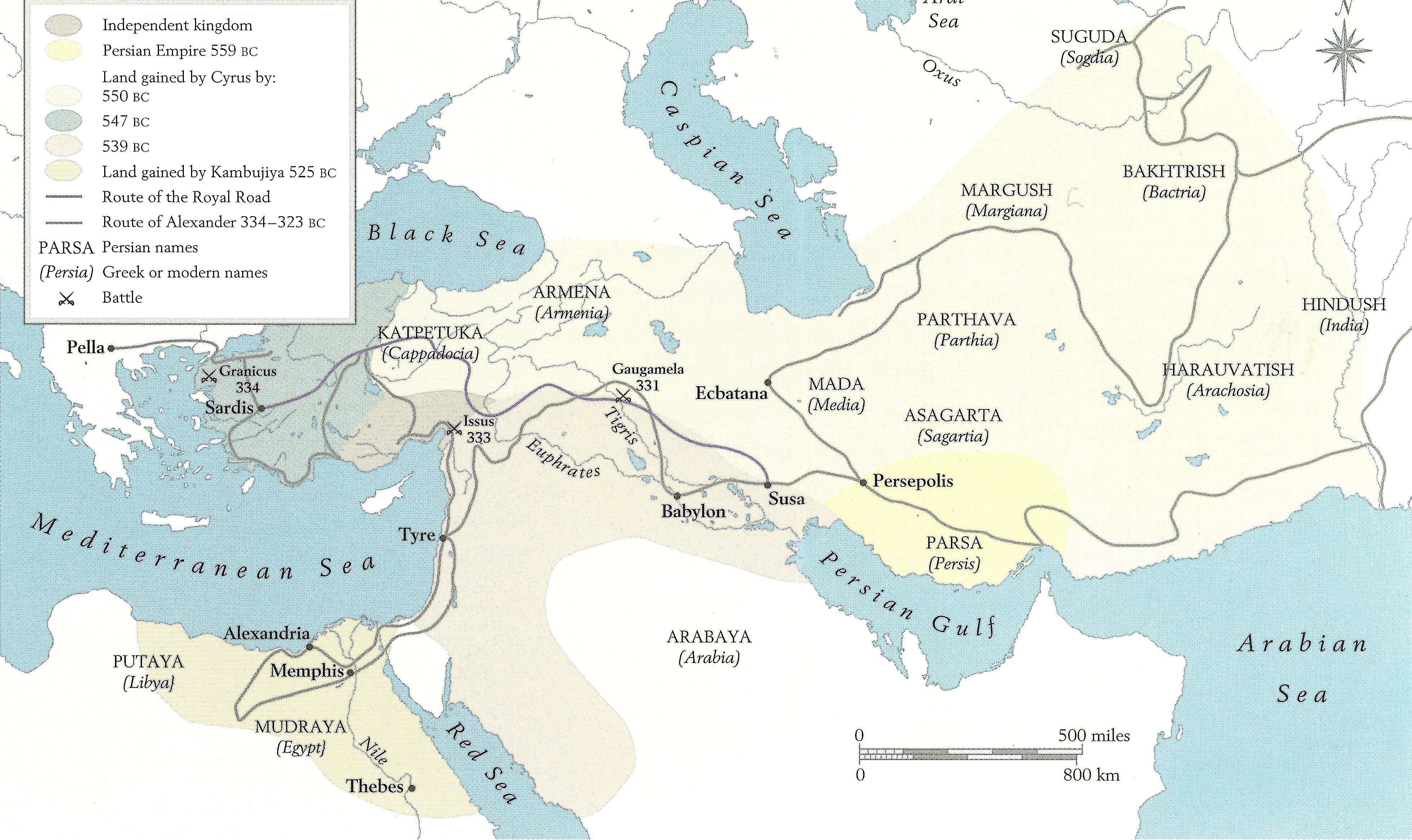
Map of the Achaemenid Persian Empire in c. 500 BCE (Source: Farrokh, page 87, 2007, Shadows in the Desert: Ancient Persia at War-Персы: Армия великих царей-سایههای صحرا–).
The earliest Persian art tended to be small and portable objects, things like ceramics, delicate ivory carvings, and small bronze sculptures from a mountainous area called Luristan. A good example of a Luristan bronze is this elegant horse bit. Two fanciful winged goats feature curving horns and upward twisted tails. The unidentified artist was clearly concerned with more than just a utilitarian piece of hardware.
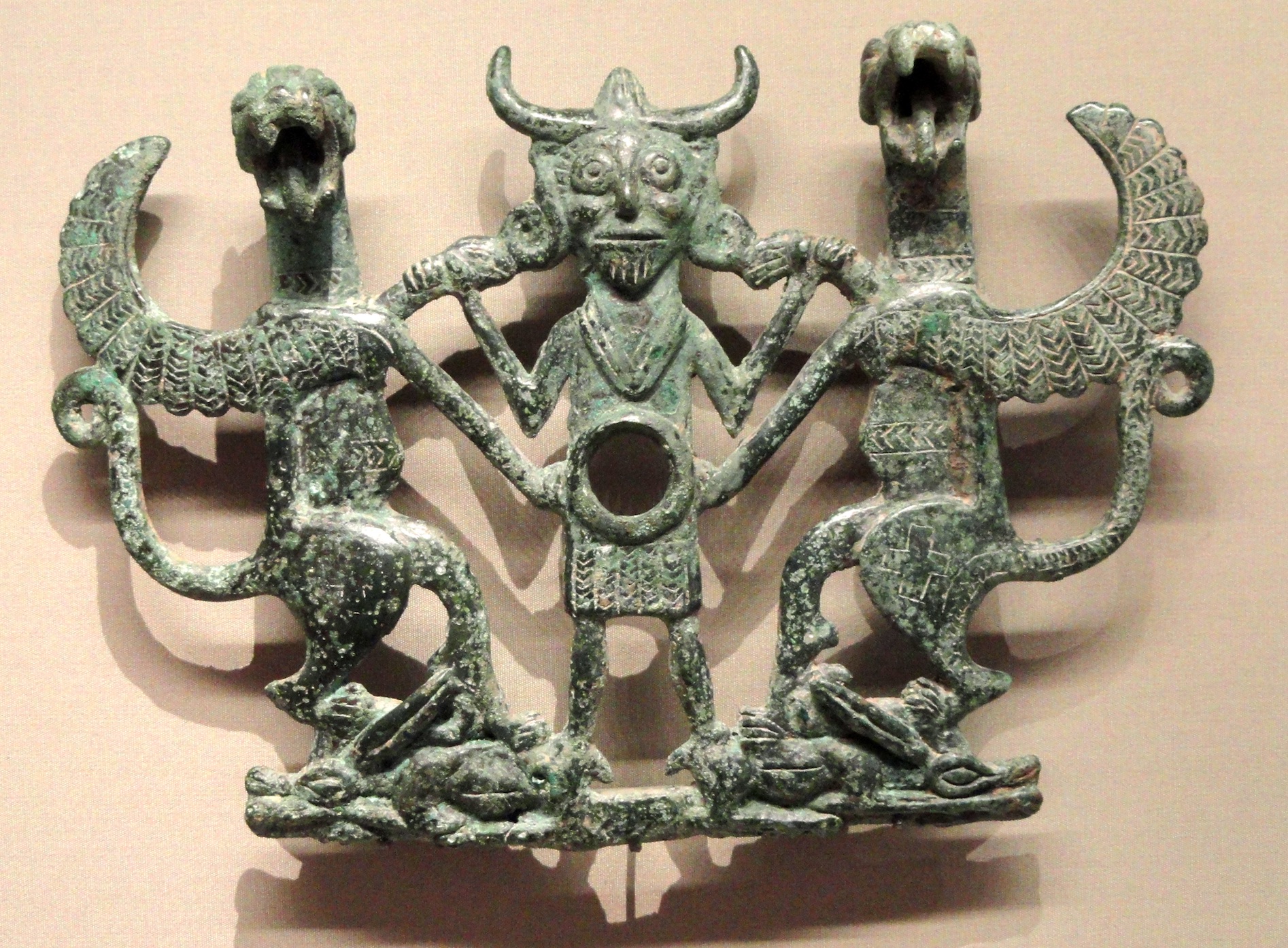
Luristan Bronze bit and cheekpiece from c. 700 BCE, featuring the “Master of Animals” motif as originally exhibited in the Cleveland Museum of Art (Source: Daderot in Public Domain).
Achaemenid Era
By around 550 and until 330 BC, the time of the Achaemenid Era (sometimes also called the First Persian Empire), Persia stretched from the shores of the Mediterranean Sea to India. It was a wealthy empire at the height of its power and leaders created a palace complex to reflect that position and prestige.
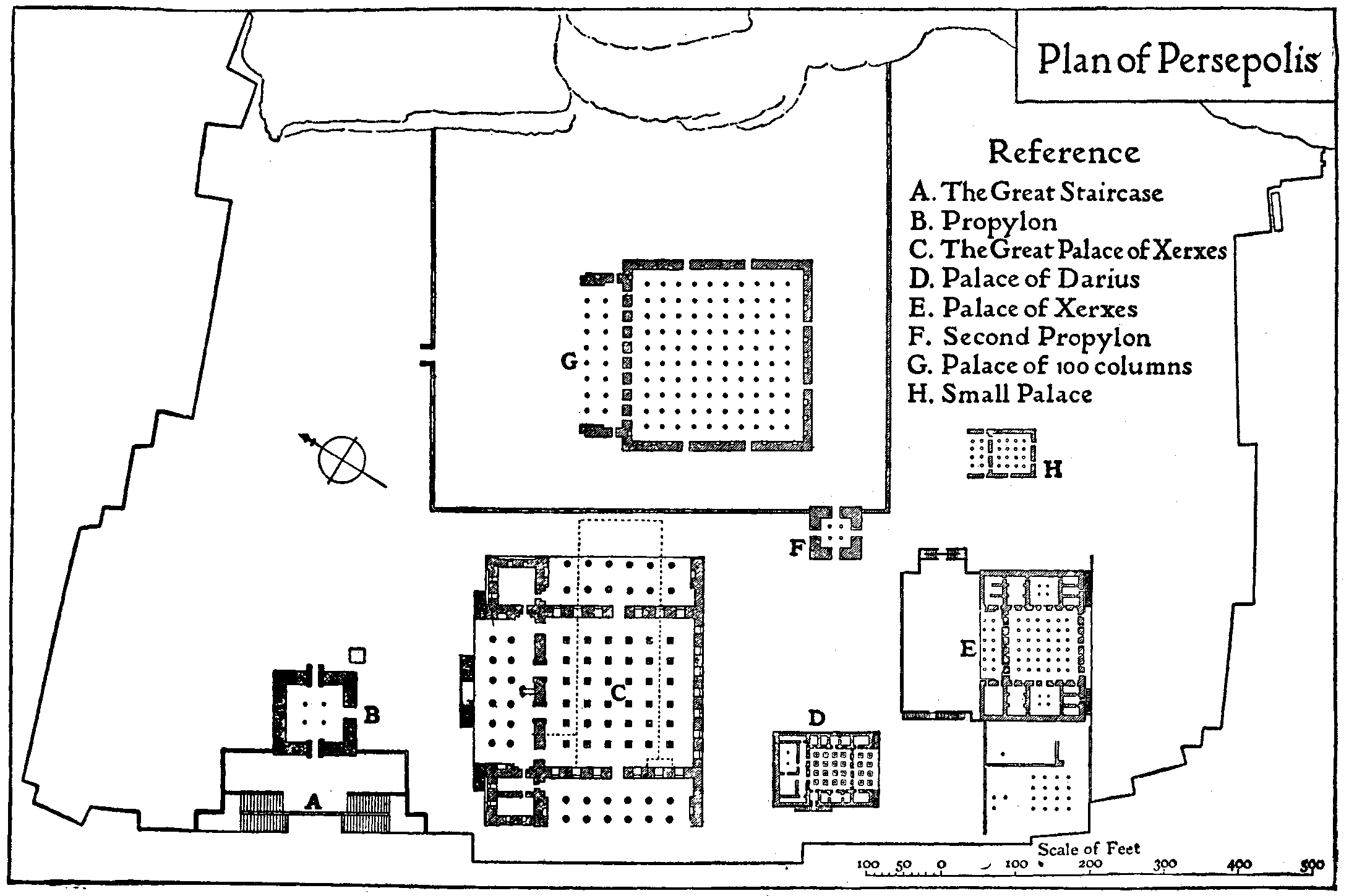
Aerial view of the Architectural Plan of Persepolis from the Encyclopedia Brittanica 11th edition (Source: Eric Shalov in Public Domain).
Achaemenid Architecture and Art
The focus of Persian art and architecture during the Achaemenid Era was the city of Persepolis, founded by Darius the Great in the 6th century BC. Meant to serve as a government center but also a place for ceremonies and festivals, Persepolis was built in terraces or layers on a leveled section of a mountainside. It was a monumental undertaking and took several rulers and almost a century to complete.

A broad overview of Persepolis (Source: Diego Delso in Public Domain).
Surrounded by fortified walls, Persepolis included a complex of structures built from locally plentiful limestone. Buildings included a Treasury to store the kingdom’s wealth, a Throne Hall, and a building called the Apadana for great royal receptions. Seventy-two thin columns with distinctive capitals (the very top part of a column) of double animal shapes surrounded the Apadana. It also had two large stairways leading up to it decorated with elaborate relief carvings of soldiers, dignitaries, and animals. A closer look at a remaining section of staircase reveals the distinct character of Achaemenid art.
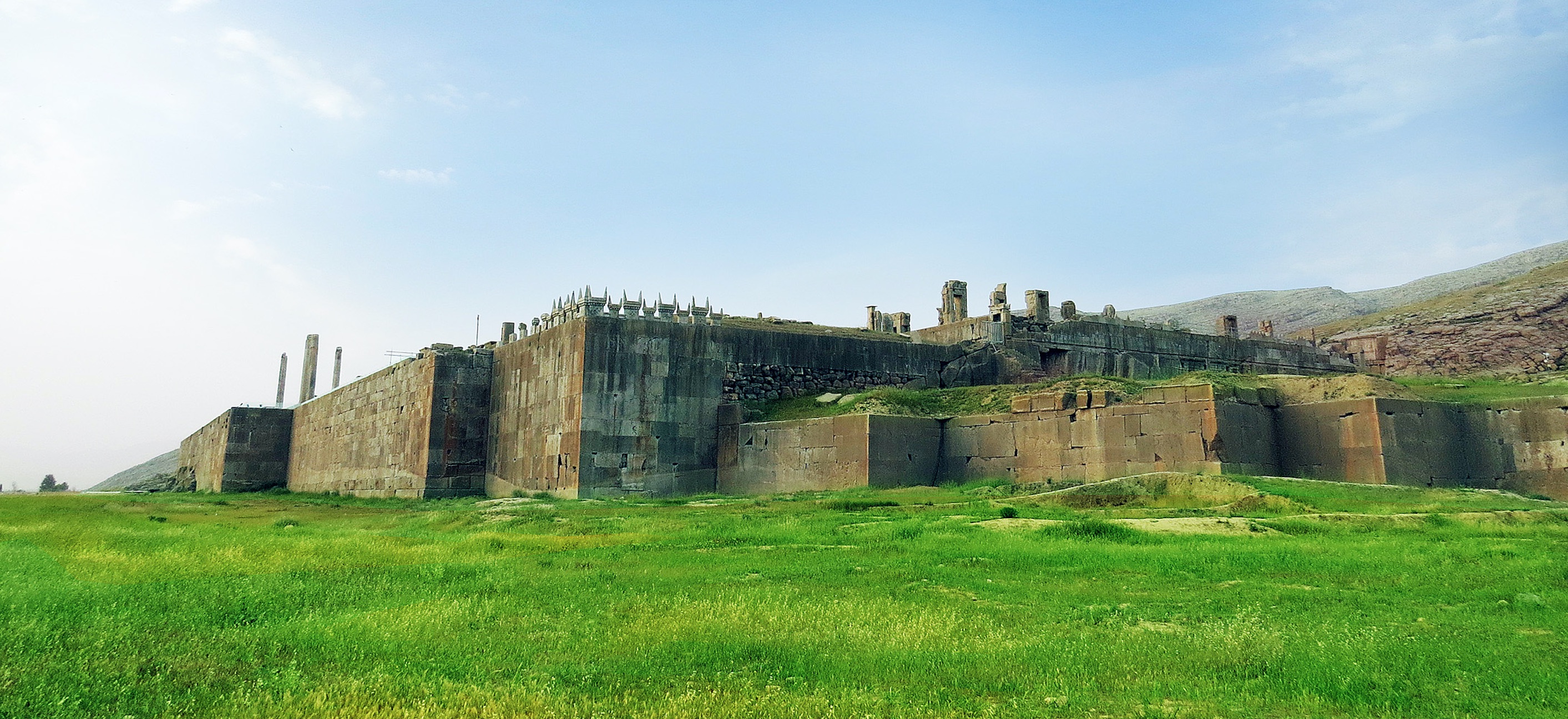
The remains of what is known as the “Palace of Artaxerxes I” at Persepolis in the spring (Source: Massoudkhalife in Public Domain).
Built of limestone, it features a series of figures in relief (a carving that’s not quite fully three-dimensional and still connected to a surface) in a line along the staircase. Imagine how you would have felt as a visitor to this palace, surrounded by such figures and geometric, stepped stonework as you headed to the stairs.
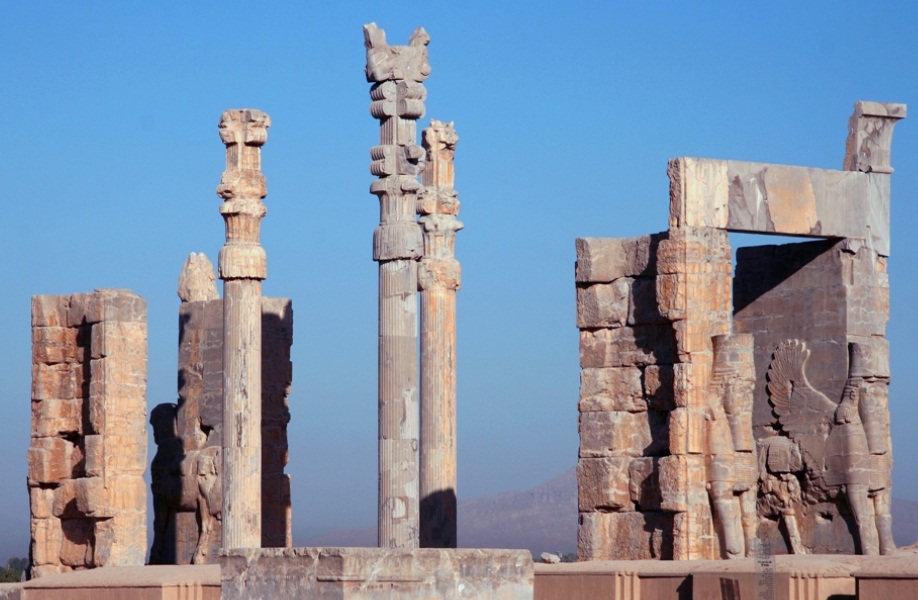
The Gate of Nations at Persepolis (Photo: Alborzagros in Public Domain). Note that Persepolis was built on a partially artificial platform.
The stairway is punctuated by a large relief carving of a lion attacking a bull. Both animals have a definite feeling of motion and carefully rendered detail. But they’re also very decorative, as you can see in this detail of another lion and bull design on another section of the Apadana staircase. Contrasting textures of smooth and beaded lines mark the bull’s surface and the lion’s mane and snarling mouth are patterned as well as realistic.
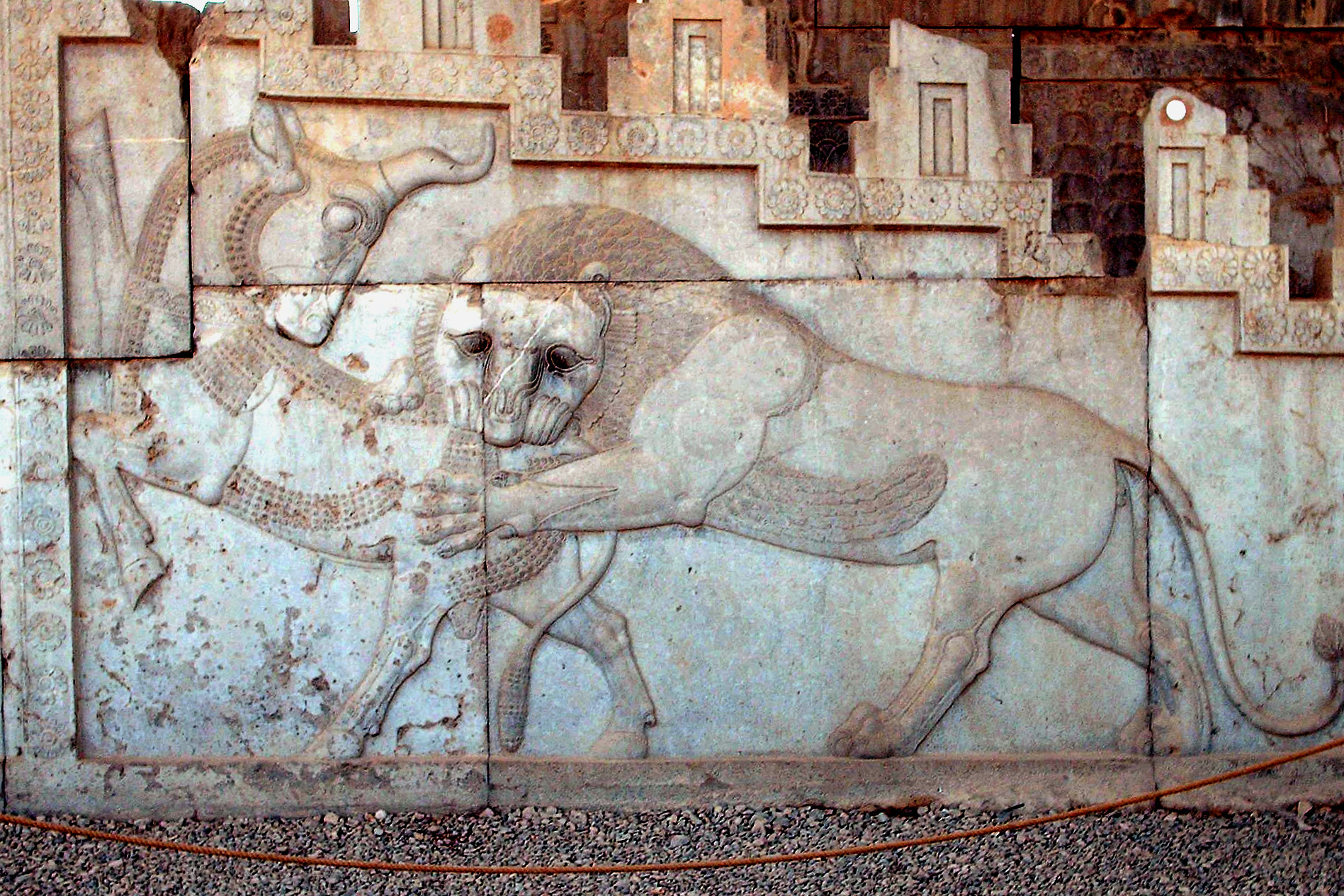
Lion attacking prey, Eastern stairway of Apadana palace, Persepolis (Source: Public Domain).



